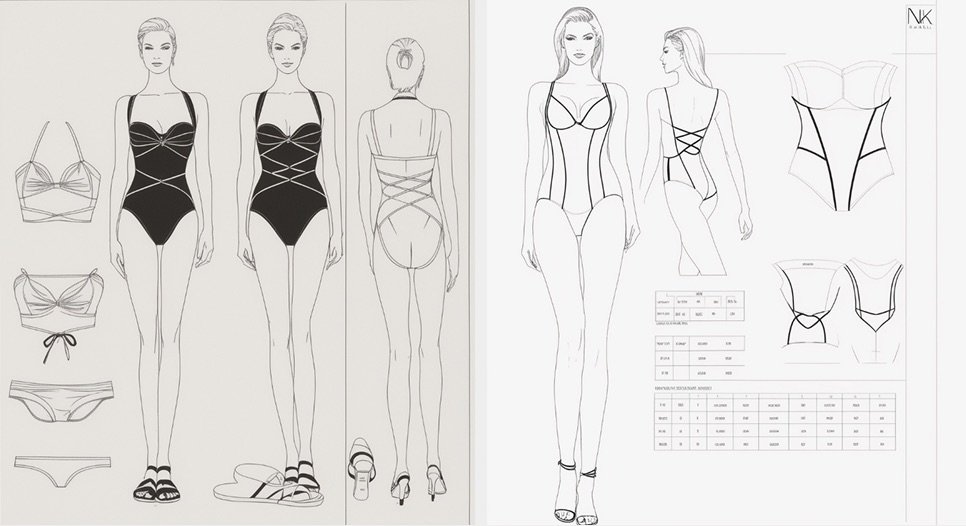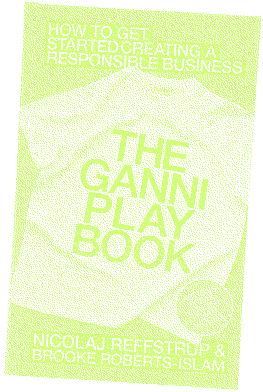- Fashion collaborations evolve from limited drops to systemic change
- Leading brands focus on supply chain innovation and transparency
- Sustainability solutions are meant to be shared, not kept exclusive
- Success is measured by industry-wide environmental impact
- Competitive advantage comes from open collaboration networks
Key takeaway: The future of fashion partnerships lies in creating sustainable value chains that benefit the whole industry, and not just driving short-term sales.
While the SKIMs x The North Face collaboration dominated headlines and resale sites at the end of 2024, some of the most innovative recent partnerships pointed to a different future — one where collaboration drives sustainability rather than just sales.
Beyond the hype that sent Kim K.'s ski collection to four times its retail value on StockX, two lesser-known partnerships signaled a crucial shift in how brands might collaborate in 2025.

1A product impact page by Fairly Made®, showing supply chain traceability and environmental footprint to support fashion transparency.
Ganni & A.P.C. have rewritten the collaboration rulebook with a laser focus on supply chain efficiency. According to Forbes, this approach will be the second most important trend redefining retail in 2025: “Smart retailers are turning their supply chain transparency into a competitive advantage, making their sourcing and sustainability practices as visible as their price tags.”
A.P.C leads the charge through its partnership with Fairly Made, 1 enabling consumers to scan QR codes to track each item's journey, recyclability, and environmental impact. Meanwhile, Copenhagen-based Ganni released their Play Book: “How to get started creating a responsible brand,” detailing how their collaboration with Portuguese suppliers Ramil and Rodrigues enabled them to transition to renewable energy 2 , which, in turn, led to carbon insetting for the brand.


2The playbook, a hands-on guide to building a more responsible business within today’s fashion landscape – written by GANNI
The most impressive aspect? Ganni's investment will benefit numerous brands that work with these suppliers. As Ganni CEO Nikolaj Reffstrup puts it: “Brands are waiting for other brands; customers are waiting for the industry — we just need to get going.” 3
2025 marks a crucial year for fashion brands to step up their sustainability journey. Consumers are more knowledgeable than ever, holding brands to account alongside government inquiries into fast fashion giants like Shein's alleged use of forced labor.

3 Nikolaj Reffstrup, CEO of Ganni, has long championed industry-wide collaboration—pushing for scalable solutions that extend beyond his own brand.
The EU Strategy for Sustainable and Circular Textiles adds further pressure 4 , requiring producers to take “responsibility for their products along the value chain with sufficient capacities for recycling and minimal incineration and landfilling.”
With collaboration firmly on every brand's roadmap, marketers must cut through the hype cycle with models that reflect consumer needs. In a crowded marketplace, sustainability and transparency could be the smart collaboration that puts your brand top of mind. 5


4 As the EU tightens sustainability regulations, fashion brands face growing pressure to rethink their impact—from production to planet.
For brand leaders looking ahead, the message is clear: Collaboration in 2025 needs to go beyond the traditional product partnership model. The most successful collaborations will be those that create lasting impact through their supply chains, share knowledge openly, and drive industry-wide change. The competitive advantage may no longer lie in exclusive partnerships but in creating collaborative networks that drive genuine environmental and social impact.

5 As the world changes, the call for meaningful action in industries like fashion grows louder.